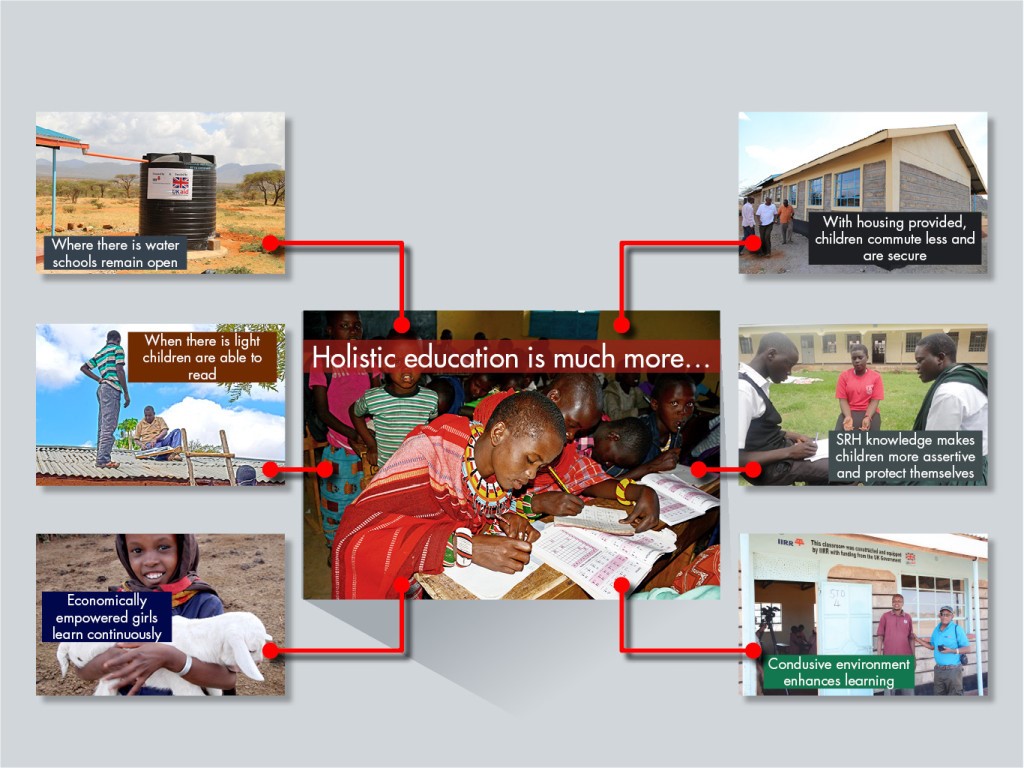The basic problems of poor people around the world can be summed up into poverty, illiteracy, diseases and bad governance. These problems are interlocking. A sick person is a poor producer. An illiterate person makes a weak citizen. Because they are interlocking, each discrete solution for one problem depends on myriad other solutions. Because we know that addressing a single issue does not solve multiple problems, we work hand-in-hand with affected communities to design integrated solutions to the many interlocking problems of living among the global poor in the 21at century.
In addressing education problems, for example, we first establish—using field surveys and qualitative assessments—the reasons that parents are not sending their children to school. Perhaps these parents need help tending their livestock or fetching firewood. Or perhaps the kids don’t get enough to eat and cannot concentrate on their studies. In many regions, girls are afraid to walk long distances for fear of being assaulted. Often, schools running water, which discourages children from regularly attending. Or maybe the family doesn’t have enough money to pay fees or buy uniforms. We take all these issues into consideration when we design holistic education interventions. The different activities and strategies should be implemented in such a way as to support and complement one another, leading to a systematic and holistic solution of the people’s problems. The guiding principle for our integrated approached is summed up in the following credo lines:
Not odds and ends but a system
Not piecemeal but an integrated approachDr. Y.C. James Yen

